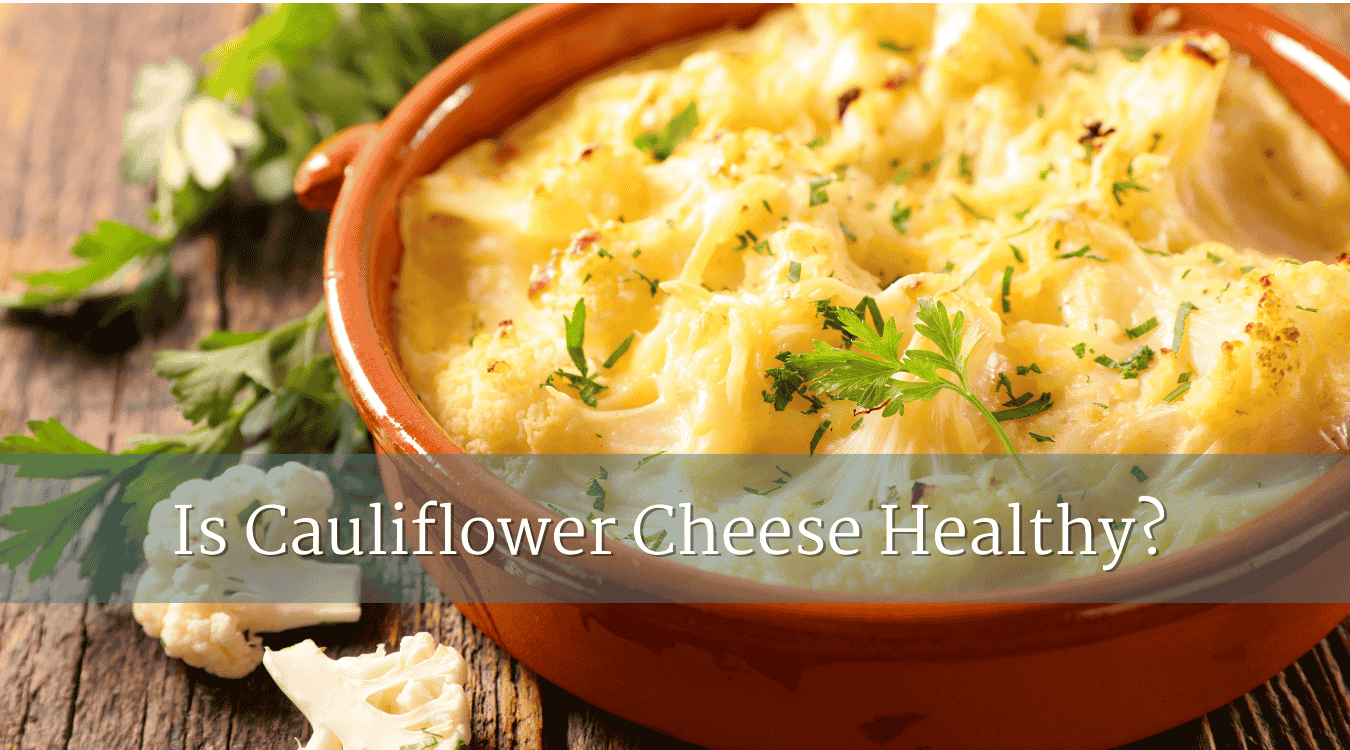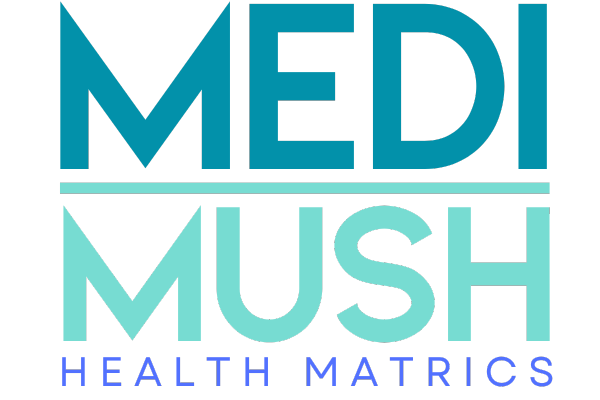
A Deep Dive into Hormonal Health and Weight Management
The Love Affair with Cauliflower Cheese
Cauliflower cheese is a dish that evokes comfort, warmth, and indulgence. A creamy, cheesy creation that transforms humble cauliflower into a decadent delight, it’s no wonder this dish has become a favourite in many households. But when it comes to health, especially in the context of weight management and hormonal balance, things get a bit more complex.
So, is cauliflower cheese healthy? The answer isn’t a simple yes or no. It depends on the ingredients, preparation, portion size, and how it fits into your overall lifestyle. In this blog, we’ll explore the impact of cauliflower cheese on hormones, its role in weight management, and how to make it a smarter, healthier choice without losing the magic that makes it so appealing.
Hormonal Health: The Science Behind Cauliflower Cheese
Hormones are the body’s messengers, controlling everything from hunger and metabolism to mood and fat storage. The foods you eat play a significant role in influencing these hormones, and cauliflower cheese has both pros and cons in this department.
Insulin: The Fat-Storage Hormone
Insulin is released by the pancreas to help regulate blood sugar levels. When you consume carbohydrates, such as the flour used in many traditional cheese sauces, your body converts them into glucose, triggering an insulin response. While this is a natural process, excessive or frequent insulin spikes can lead to fat storage rather than fat burning.
Cauliflower, being a low-carb vegetable, doesn’t significantly raise blood sugar levels. However, if the sauce contains refined flour or sugar, it can negate this benefit. To keep insulin levels in check, opt for low-carb thickeners like almond flour, cornstarch, or even cream cheese.
Leptin: The Satiety Hormone
Leptin is responsible for signaling your brain that you’re full. The fats in cheese, cream, and butter can stimulate leptin release, helping you feel satisfied after a meal. However, consuming these high-calorie ingredients in excess can lead to leptin resistance—a condition where the brain no longer receives satiety signals effectively, causing overeating.
Balancing the fats in cauliflower cheese with protein and fibre-rich sides can help regulate leptin and prevent overindulgence.
Thyroid Hormones: Regulating Metabolism
Your thyroid gland produces hormones that regulate your metabolism, energy levels, and fat-burning capacity. Cheese, a primary ingredient in cauliflower cheese, is a good source of iodine, a mineral crucial for thyroid health. However, excessive saturated fat from dairy can impact thyroid function over time, especially if it leads to weight gain or inflammation.
Choosing lower-fat dairy options or moderating portions can support thyroid health without compromising taste.
Cauliflower Cheese and Weight Management
When it comes to weight management, cauliflower cheese is a double-edged sword. Its main ingredient, cauliflower, is a low-calorie, nutrient-dense vegetable that’s excellent for weight loss. However, the cheese sauce can significantly increase the calorie content, making it easy to overconsume.
The Role of Cauliflower
Cauliflower is a superstar in the world of healthy eating. Its low calorie and carbohydrate content make it an ideal choice for those watching their weight. Additionally, it’s packed with fibre, which:
- Promotes satiety, helping you eat less overall.
- Supports gut health by feeding beneficial bacteria.
- Stabilises blood sugar levels, reducing cravings.
Cauliflower is also rich in antioxidants like glucosinolates and sulforaphane, which may help regulate estrogen levels and support liver detoxification. These properties make it especially beneficial for hormonal health.
The Cheese Sauce Conundrum
Traditional cheese sauce is made with butter, flour, milk, and cheese. While delicious, this combination is calorie-dense and often high in saturated fat. For example, a typical serving of cauliflower cheese can range from 250 to 400 calories, with a significant portion coming from fat.
To make cauliflower cheese more weight-management-friendly:
- Use low-fat or reduced-fat cheese to cut down on calories.
- Replace butter with olive oil or skip it altogether.
- Swap out milk for unsweetened almond milk or a similar alternative.
These small changes can significantly reduce the calorie and fat content while preserving the dish’s creamy texture and flavour.
Why Muscle and Fat Matter in Weight Loss
One common pitfall in weight loss is focusing solely on reducing the number on the scale without considering what’s being lost—fat or muscle. Muscle is metabolically active tissue that helps you burn calories even at rest. Losing muscle can slow your metabolism, making it harder to lose weight and keep it off.
How Cauliflower Cheese Can Help
- Protein Content: Cheese provides protein, which is essential for muscle repair and maintenance. Adding a lean protein source, such as grilled chicken or turkey, can further enhance the dish’s muscle-preserving benefits.
- Fat for Satiety: The fats in cheese can keep you feeling full, reducing the likelihood of overeating later. Just be mindful of portion sizes to avoid consuming too many calories.
The Nutritional Profile of Cauliflower Cheese
Let’s break down the typical nutritional components of cauliflower cheese:
- Calories: 250–400 per serving, depending on the recipe.
- Protein: 10–15g, mainly from the cheese.
- Fats: 15–30g, primarily saturated fats.
- Carbohydrates: 5–15g, influenced by the thickener used in the sauce.
- Fibre: 2–3g, from the cauliflower base.
While the protein and fibre content are beneficial, the high fat and calorie content mean this dish should be eaten in moderation, especially if you’re trying to lose weight.
Smart Strategies to Make Cauliflower Cheese Healthier
- Lighten the Cheese Sauce: Replace heavy cream with unsweetened almond milk or low-fat milk. Use a reduced-fat cheese to maintain flavour while cutting calories.
- Boost Fibre and Protein: Add chopped spinach, kale, or broccoli to the dish for extra fibre. Stir in shredded chicken or tofu for a protein boost.
- Portion Control: Serve cauliflower cheese as a side dish rather than a main course. Pair it with lean protein and a fresh salad for a balanced meal.
- Experiment with Flavours: Use herbs and spices like paprika, garlic, or mustard to enhance flavour without adding calories.
Why Cauliflower Cheese Can Be Hormone-Friendly
When prepared thoughtfully, cauliflower cheese can support hormonal health in several ways:
- Low Glycaemic Impact: Cauliflower is a low-GI food that helps stabilise blood sugar and reduce insulin spikes.
- Iodine Content: Cheese provides iodine, essential for thyroid hormone production.
- Fibre Benefits: The fibre in cauliflower supports gut health, which is closely linked to hormone regulation.
However, the key is balance. Overindulgence in high-fat dairy can lead to hormonal imbalances over time, so it’s essential to enjoy cauliflower cheese in moderation and as part of a varied diet.
Final Thoughts: Is Cauliflower Cheese Healthy?
The answer lies in the preparation and how it fits into your overall lifestyle. Traditional cauliflower cheese can be high in calories and saturated fat, making it less ideal for weight management or long-term hormonal health if consumed excessively. However, by making a few smart tweaks—like using low-fat cheese, adding protein, and incorporating more vegetables—you can transform this comfort food into a nutritious dish that supports your health goals.
So, the next time you’re craving a plate of creamy, cheesy goodness, go ahead and indulge—just remember to make it a balanced, thoughtful part of your meal plan.
1. Classic Lightened-Up Cauliflower Cheese
Ingredients:
- 1 medium head of cauliflower, cut into florets
- 1 cup (240ml) unsweetened almond milk (or low-fat milk)
- 1 tablespoon cornstarch (or 1½ tablespoons almond flour)
- 1 tablespoon olive oil (or butter, if preferred)
- 1 cup (120g) reduced-fat sharp cheddar cheese, grated
- 2 tablespoons grated Parmesan cheese
- 1 teaspoon Dijon mustard
- ½ teaspoon garlic powder
- ½ teaspoon smoked paprika (optional)
- Salt and pepper, to taste
Instructions:
- Preheat Oven: Set your oven to 200°C (400°F). Lightly grease a baking dish.
- Cook the Cauliflower: Steam or boil the cauliflower florets for 5–7 minutes until tender but not mushy. Drain and set aside.
- Make the Sauce:
- In a small bowl, whisk the cornstarch with a few tablespoons of the milk to create a slurry.
- Heat olive oil in a saucepan over medium heat. Add the milk and whisk in the slurry. Stir until it begins to thicken.
- Reduce heat to low, then stir in cheddar cheese, Parmesan, Dijon mustard, garlic powder, paprika, and a pinch of salt and pepper. Mix until smooth.
- Combine: Place the cauliflower florets in the baking dish. Pour the cheese sauce over the top, ensuring all florets are well coated.
- Bake: Bake for 15–20 minutes, until bubbly and slightly golden on top.
- Serve: Garnish with fresh herbs like parsley or chives if desired.
Two Protein-Packed Cauliflower Cheese with Spinach and Chicken
Ingredients:
- 1 medium head of cauliflower, cut into florets
- 1 cup (150g) shredded cooked chicken breast
- 2 cups fresh spinach leaves, roughly chopped
- 1 cup (240ml) unsweetened cashew milk (or skim milk)
- 1 tablespoon Greek yoghurt (optional, for creaminess)
- 1 tablespoon oat flour (or whole wheat flour)
- 1 teaspoon olive oil
- ¾ cup (90g) grated mozzarella cheese
- ¼ cup (30g) grated Parmesan cheese
- 1 teaspoon garlic powder
- ½ teaspoon nutmeg (optional)
- Salt and pepper, to taste
Instructions:
- Preheat Oven: Preheat your oven to 200°C (400°F). Lightly grease a baking dish.
- Cook the Cauliflower: Steam or boil the cauliflower for 5–7 minutes until tender but firm. Drain and set aside.
- Prepare Chicken and Spinach: In a skillet, heat a teaspoon of olive oil over medium heat. Add spinach and cook until wilted. Stir in shredded chicken and season with a pinch of garlic powder and pepper. Set aside.
- Make the Sauce:
- In a saucepan, whisk the oat flour with the cashew milk over medium heat until thickened.
- Remove from heat and stir in Greek yoghurt (if using), mozzarella, Parmesan, garlic powder, nutmeg, salt, and pepper. Mix until smooth.
- Assemble: Place the cauliflower, spinach, and chicken in the baking dish. Pour the cheese sauce over the top, ensuring an even coating.
- Bake: Bake for 20 minutes, until bubbly and golden.
- Serve: Enjoy this high-protein cauliflower cheese as a hearty main dish or a filling side!



